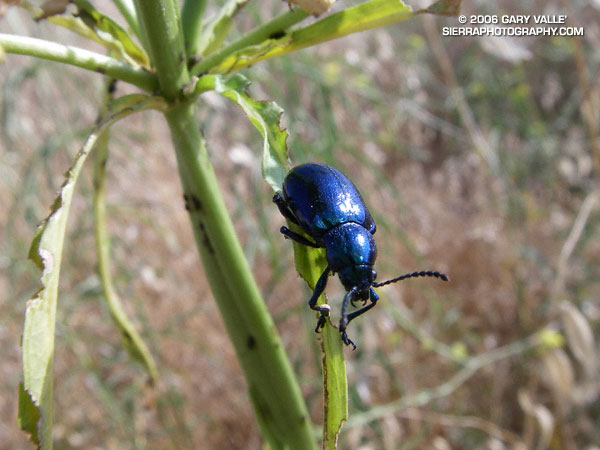
A Blue Milkweed Beetle (Chrysochus cobaltinus) on a somewhat insect eaten Narrow Leaf Milkweed (Asclepias fascicularis).
Photograph was taken on a run on Laskey Mesa in Upper Las Virgenes Canyon Open Space Preserve (formerly Ahmanson Ranch).

A Blue Milkweed Beetle (Chrysochus cobaltinus) on a somewhat insect eaten Narrow Leaf Milkweed (Asclepias fascicularis).
Photograph was taken on a run on Laskey Mesa in Upper Las Virgenes Canyon Open Space Preserve (formerly Ahmanson Ranch).

The fuzzy critter with the beady eyes is a Bee Fly. Its darting, hummingbird-like movements caught my eye while running on the Tumamait Trail near Mt. Abel (Cerro Noroeste) on Sunday. It was feeding on a Western Wallflower (Erysimum capitatum). Fully consumed by the morning’s experiences, I had been marveling at the vibrant yellow of Wallflowers along the trail.
With only a cursory glance, someone might mistake a Bee Fly for a bee. It does buzz. But the resemblance is superficial. It is smaller than a Honey Bee, and more thick-bodied. It has long legs, and a long proboscis to collect nectar. These can be seen in the inset photographs.
Looking at these photographs it struck me that there probably is a relationship between the length of the Bee Fly’s proboscis, and the length of its legs. It can be seen in the photos that the Bee Fly uses its legs to grasp a plant while flying and feeding. This helps stabilize its flight, conserves energy, and enables a quick escape from a possible predator. It would seem that the legs have evolved to be just long enough to accomplish this task.
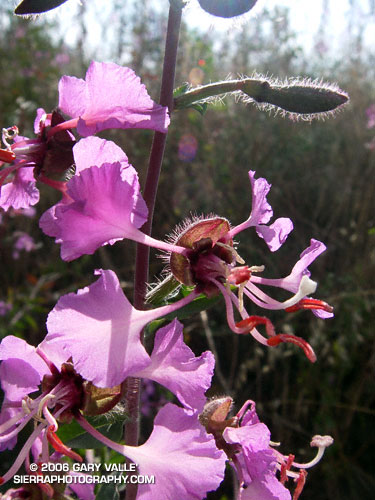
Elegant Clarkia (Clarkia unguiculata) is a showy, if somewhat bizarre looking, flower that blooms late in the Spring. It is also known by the common name woodland Clarkia. It adds a refreshing dash of color to the hills of Southern California, as they turn from green to golden brown. The plant appears to be an excellent indicator of Spring rainfall. In a drought year it might only be a foot tall, but in a rain season with a wet Spring, some stalks may reach 6 or 7 ft.
This photograph was taken near Laskey Mesa, on a run in Upper Las Virgenes Canyon Open Space Preserve (formerly Ahmanson Ranch).
Related post: Rain Gauge
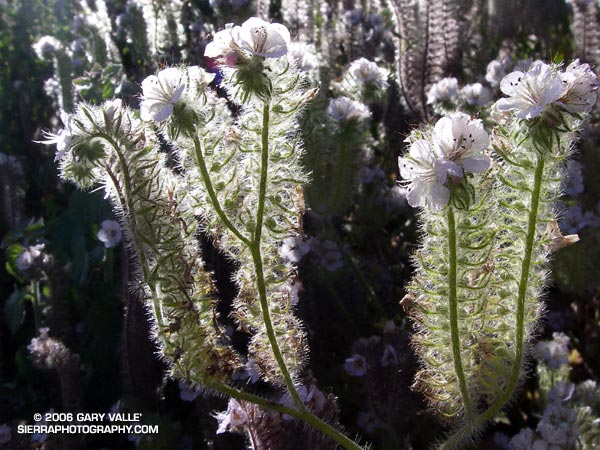
Caterpillar Phacelia (Phacelia cicutaria) was prevalent at Sage Ranch prior to the 2005 Topanga Fire. It may be somewhat more widespread than I’ve generally seen, but this could be due in part to last year’s record rainfall and this season’s late rainfall. It doesn’t appear to be a fire follower in the same sense as Large Flowered Phacelia, Star Lily or Dicentra, whose populations have increased dramatically this year.
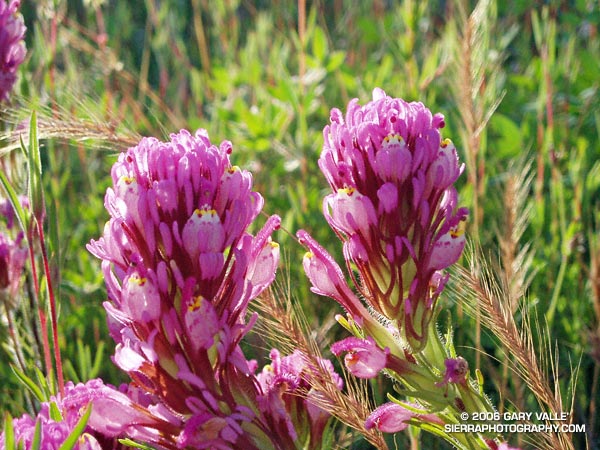
A close view of Owl’s Clover reveals the probable reason for the name — fat little purplish-pink owls, crowned with a tinge of yellow, perched amid the purplish-pink of this unusual blossom. Here’s an even closer view of one of the individual flowers, showing its remarkable structure.
Owl’s Clover, in this case Castilleja exserta, is a fairly common California native that seems to prefer the margins of dirt roads and other disturbed areas at lower elevations. It’s in bloom now in the Santa Monica Mountains and Simi Hills. I noticed some on the Bulldog loop while running the Malibu Creek Challenge on Saturday, and also while doing a short run out a Sage Ranch Sunday.
This photograph is from a run at Sage Ranch on May 2, 2005.
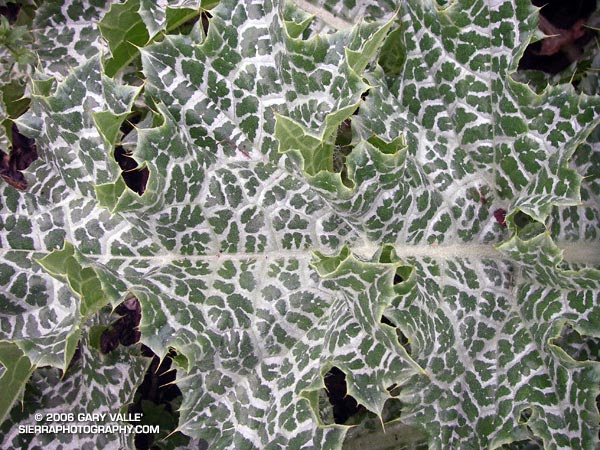
Milk thistle (Silybum marianum) is an aggressive invasive species not native to California. In Upper Las Virgenes Canyon Open Space Preserve (formerly Ahmanson Ranch) it seems to be increasingly abundant, particularly in the aftermath of the Topanga Fire. Last year, in some areas of Upper Las Virgenes Canyon, it grew thick as corn and more than head high.